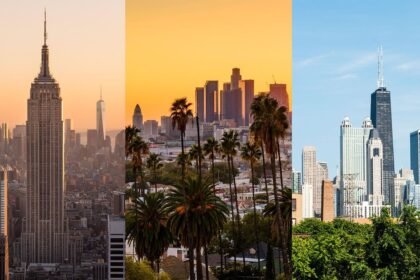Canada’s Remote Islands Guided by Haida Custodians
On the misty shores of Canada’s remote islands, a transformative journey is unfolding. At SG̱ang Gwaay Llnagaay, a sacred site deep within Gwaii Haanas National Park Reserve, a young woman from the Haida Watchmen programme traced her family crest on a centuries-old totem pole. Despite having the opportunity to work in a distant city, she chose to return home, embodying a deep-seated connection to her land and heritage.
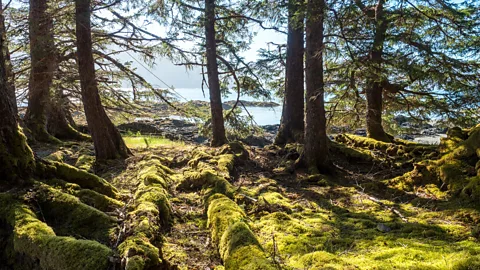
As she led visitors along a shell-strewn path under canopies of moss-covered trees, the haunting call of a raven echoed. At the remnants of ancient longhouses, she described how her ancestors split enormous beams using stone tools—an illustration of deep ecological knowledge and enduring ingenuity.
Exploring the Cultural Depths of Canada’s Remote Islands
This archipelago of more than 200 islands stretches along British Columbia’s northern coast. Known as Haida Gwaii, it has been home to the Haida Nation for over 14,000 years. While colonisation once fractured their connection to the land, new agreements—Gaayhllxid / Gíihlagalgang (“Rising Tide”) and Chiix̲uujin / Chaaw K̲aawgaa (“Big Tide, Low Water”)—mark a powerful transition to Haida-led governance. These historic treaties not only affirm cultural rights but prioritize stewardship and sustainability.
For the Haida, these agreements represent the return of decision-making power and the revival of cultural practices. For visitors, they open doors to immersive, respectful, and Indigenous-led experiences on Canada’s remote islands.
The Haida Watchmen: Guardians of Culture on Canada’s Remote Islands
Today, SG̱ang Gwaay Llnagaay is safeguarded by the Haida Watchmen, stewards who maintain sacred sites and guide visitors with storytelling. Access to this UNESCO World Heritage Site is strictly regulated—reservations are limited, orientation is mandatory, and visitor numbers are capped—to preserve the integrity of both land and legacy.
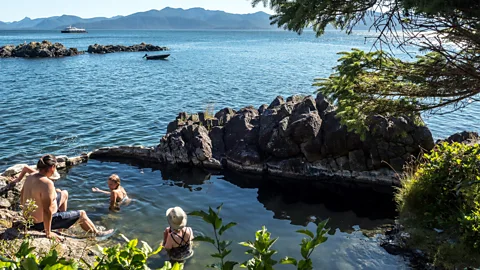
An ongoing archaeological project, led by Haida experts and Parks Canada staff, is unearthing history hidden beneath layers of forest and storm-battered soil. Unlike past excavations that excluded Indigenous voices, these are now Haida-directed, merging science with oral history and cultural continuity.
Tragedy and Resilience: Echoes of the Past
SG̱ang Gwaay once bustled with life—elders mentoring youth, canoes lining the shore, and children laughing beneath towering poles. That changed in the late 1800s when waves of disease reduced a thriving Haida population of up to 30,000 to just a few hundred. Survivors were relocated to G̱aw and HlG̱aagilda.
“One day, even the last pole will fall,” an elder once said. And yet, his words hinted at hope. New generations were already learning the language, carving poles, and rediscovering ancestral ways.
Ancestral Memory and Environmental Knowledge
The Haida story spans back to the Ice Age. As glaciers melted and oceans rose, the ancestors of today’s Haida adapted to island life. They cultivated food in clam gardens, fished the abundant seas, and became expert navigators. But with the arrival of European traders in the 1700s, their ecological balance was disrupted—sea otters were hunted to near extinction, kelp forests disappeared, and traditional lifeways were altered.
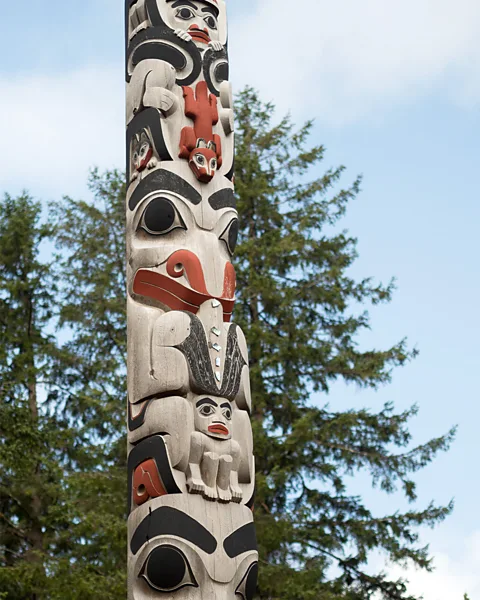
Yet the gravest wound came from colonisation itself: cultural suppression, language loss, and residential schools. Despite these assaults, the Haida held on.
The War in the Woods: A Turning Point
In 1985, Haida Elders stood firm against clear-cutting on Lyell Island, sparking the “War in the Woods.” This peaceful resistance ignited a nationwide reckoning on environmental stewardship and Indigenous sovereignty.
The protest catalyzed negotiations with Canada, leading to the creation of Gwaii Haanas National Park Reserve—a model of co-managed conservation grounded in respect.
Transforming Tourism on Canada’s Remote Islands
The earlier tourism model was extractive—fly-in fishing lodges offered limited understanding of Haida culture. But today, guided by visionaries like the Cowpar brothers of Haida Style Expeditions, the industry is transforming. Their tours take visitors into the heart of the territory, offering insights into language, values, and historical struggles.
“Tourism used to take everything,” said James Cowpar. “Now, visitors contribute to a story of renewal. They learn that we don’t own the land—it owns us.”
Collaborators like Maple Leaf Adventures work closely with Haida communities, employing local ambassadors and following a strict code of conduct rooted in cultural sensitivity and ecological respect.
Haida-Led Business and Cultural Revival
With more than a dozen Indigenous-owned tourism enterprises operating across the islands, economic sovereignty is taking shape. These ventures support cultural resurgence while educating travellers through authentic, low-impact experiences.
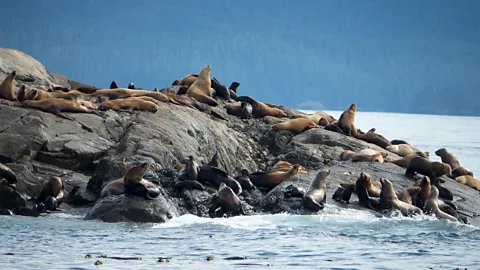
Hot Springs Island (Gandll K’in Gwaay.yaay) and Windy Bay (Hlk’yah G̱awG̱a) are among the most visited sites, offering soaks in geothermal pools, wildlife sightings, and moments of reflection beneath the towering poles of the Gwaii Haanas Legacy site.
Balance, Not Ownership
At Windy Bay, a black bear—the taan—briefly blocked the visitor path, flipping stones in search of crab. The respectful plea, “Yahguudang,” was whispered by a guide, using the Haida word for “respect” as a request to cross the beach. The bear eventually wandered away.
Here, language isn’t just spoken—it’s lived. The Haida belief that “everything depends on everything else” echoes across the land, reaffirming the interdependence between humans, animals, and ecosystems.
The Legacy Pole: A Beacon for the Future
The Gwaii Haanas Legacy Pole, raised in 2013, marks the 20th anniversary of the co-management agreement and stands as the first pole erected in Gwaii Haanas in more than a century. Carved with traditional symbols and new stories, it bridges the past and the future, embodying a Haida vision of self-determination and environmental harmony.
With the recent governance agreements now in place, this vision is evolving into reality—Canada’s remote islands are not only being protected; they’re being reclaimed.
Final Thoughts: A Model for Reconciliation
Haida Gwaii is more than a destination—it’s a lesson in what’s possible when ancestral knowledge, ecological awareness, and political will intersect. The success of this Indigenous-led revival offers a blueprint for reconciliation across Canada and beyond.
Travellers who venture to Canada’s remote islands do more than witness breathtaking beauty—they become part of a living story, shaped by respect, resilience, and renewal.



